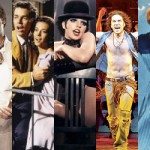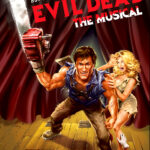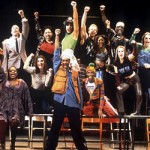For our fifth analysis of film adaptations, we will reach out to Broadway for the source. In 1986, Andrew Lloyd Webber revolutionized the musical scene with his stage production of The Phantom of the Opera. Though the story had been brought successfully to film 60 years prior to the stage play, it took until 2004 (and Joel Schumacher, of all people), to bring the musical to audiences worldwide.
While Joel Schumacher has had his hits (The Lost Boys, A Time to Kill) and his misses (Batman & Robin), it cannot be denied that his translation of Phantom of the Opera from stage to screen was a success. While the play takes place as an ‘opera within an opera,’ utilizing the theater the audience is in as part of the production, Schumacher had the task of pulling a person in a movie theater into the world of the historical theater. The film’s opening transition accomplishes this by beginning with the dusty old theater’s contents being auctioned off and then having it transition to its glorious past form, showcasing all aspects of the theater life to the audience against a backdrop of the opening music. Who would have thought about the set designers, the livestock, and society that lived behind those curtains? Film allows us to see much more than what is hinted at in the stage production.
One major request that was made prior to choosing a cast for the film adaptation was to have all the actors sing their parts (minus Minnie Driver, though she does lend her vocals to the film’s ending song, “Learn to be Lonely”). This brought on one positive and one negative note regarding the film. All the voices (some of which are incredibly strong) match well to the person and the character they play. For film, a person doesn’t need to belt out a tune, but can instead softly sing it in a more natural form. Most of the actors in this film were able to do that, and exceptionally well (e.g. Patrick Wilson). However, this request was also a bane, namely in the singing performance of Gerard Butler (300). While his performance as the Phantom was powerful and wondrous, his singing was, by far… not. Simply put, he was no Michael Crawford, and one had to wonder how he was able to teach Christine how to sing so well when he could not. We aren’t talking Mamma Mia bad, but his voice is much deeper and huskier than what a Phantom fan is used to. I myself grew used to it upon multiple viewings, but Crawford’s voice will always be the true Phantom’s.
Due in part to Webber being a scriptwriter for the screen version of the film, there are few changes made to the overall structure of the story. The changes most noticeable are the inclusion of a sword fight (with a pretty intense underscore), the rearrangement of the falling chandelier from the middle of the story to the end sequence, and a scene showing where the Phantom came from and his relation to Madame Giry. All these sequences (minus the falling chandelier) are done to the benefit of film. The sword fight and subsequent battles Raoul goes through to save Christine would have been near impossible on stage, but added to the intensity of the fight for love (though I still believe the water trap was a bit rubbish, but that’s a personal opinion). It is also important to note that several lyrics were changed due to adjustments in the story (Raoul’s comment of Christine being ‘gawkish’ omitted, removal of the acknowledgment of a new chandelier in “Masquerade,” etc.). Some scenes were blended into each other, or simply allowed more screen time for the Phantom.
The biggest (and best, in my opinion) changes when it comes to characters fall on Raoul and Madame Giry (Miranda Richardson, who affected the French accent, unlike others). In the original play, Raoul is much more of a businessman, and even snooty at times towards Christine. In the play, his attitude is not that of a romantic lead, but simply a guy in power against the romantic nature of the Phantom. Thanks to a bit of rewriting and re-done lyrics in the film, Raoul is now given the opportunity to be the sweet romantic who one could believe Christine would have a good life with. Madame Giry was always the mysterious character who appears to know much, but says little. The film gives her a large exposition as to why she knows so much, how she played a part in the Phantom’s existence, and even where her true alliance lies.
When it comes to a musical, costuming is key. While the stage must take into account individuals seated over 500 feet away, the silver screen does not. Details are more minute, colors softened, and clothing period accurate. While “Masquerade” always provided the most extreme in costuming, this sequence was toned down 150% for the screen, mixing the colors of gold, white, and black. The overly elaborate “Red Death” costume the Phantom dons in this sequence is softened and made more princely rather than demonic. While this would never work on stage, the opposite also applies. The stage costumes, as lovely as they are at a distance, would never work seriously on screen. Both variations of this production (stage and screen) work in their own right in terms of costuming.
While the musical is not for everyone (some love it, many hate it), the film softens what most dislike about the theater, allowing the general audience to find enjoyment in a story of love and love lost. The performances (singing sometimes aside) are enjoyable, and the look of the film captures that wonder of the opera of the late 1800s.







He’s simply just so sweet!
Wasn’t he involved in a bizarre shooting incident?